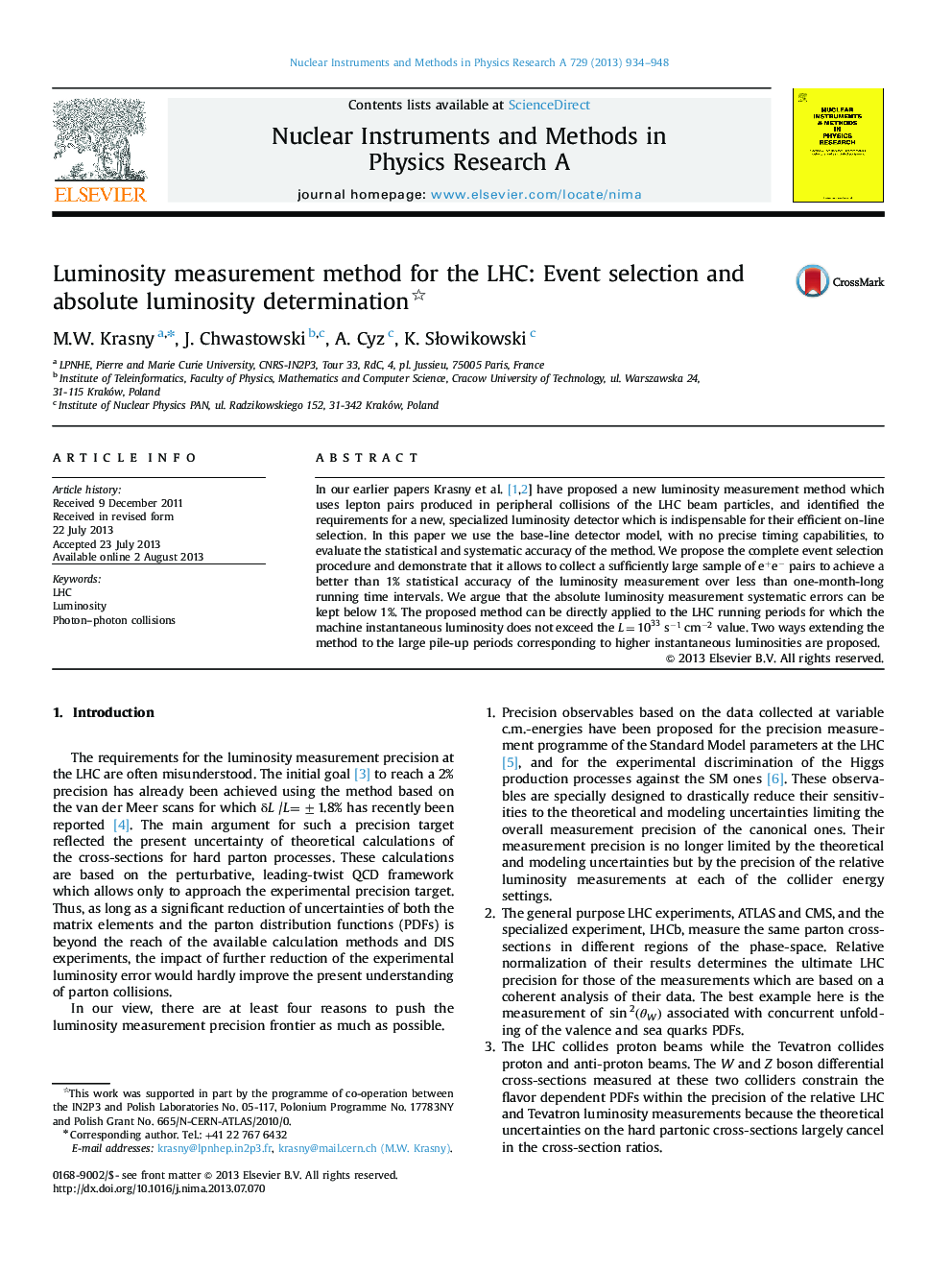| Article ID | Journal | Published Year | Pages | File Type |
|---|---|---|---|---|
| 8179254 | Nuclear Instruments and Methods in Physics Research Section A: Accelerators, Spectrometers, Detectors and Associated Equipment | 2013 | 15 Pages |
Abstract
In our earlier papers Krasny et al. [1], [2] have proposed a new luminosity measurement method which uses lepton pairs produced in peripheral collisions of the LHC beam particles, and identified the requirements for a new, specialized luminosity detector which is indispensable for their efficient on-line selection. In this paper we use the base-line detector model, with no precise timing capabilities, to evaluate the statistical and systematic accuracy of the method. We propose the complete event selection procedure and demonstrate that it allows to collect a sufficiently large sample of e+eâ pairs to achieve a better than 1% statistical accuracy of the luminosity measurement over less than one-month-long running time intervals. We argue that the absolute luminosity measurement systematic errors can be kept below 1%. The proposed method can be directly applied to the LHC running periods for which the machine instantaneous luminosity does not exceed the L=1033sâ1cmâ2 value. Two ways extending the method to the large pile-up periods corresponding to higher instantaneous luminosities are proposed.
Related Topics
Physical Sciences and Engineering
Physics and Astronomy
Instrumentation
Authors
M.W. Krasny, J. Chwastowski, A. Cyz, K. SÅowikowski,
